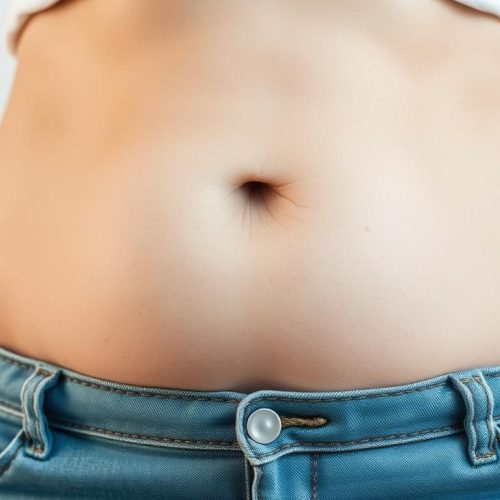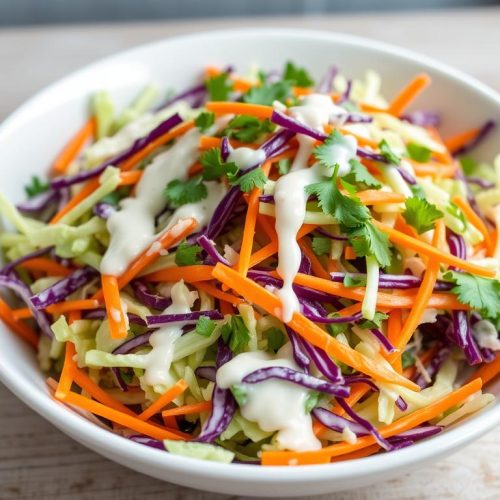Delicious Low Carb Hamburger Buns for a Healthier Meal
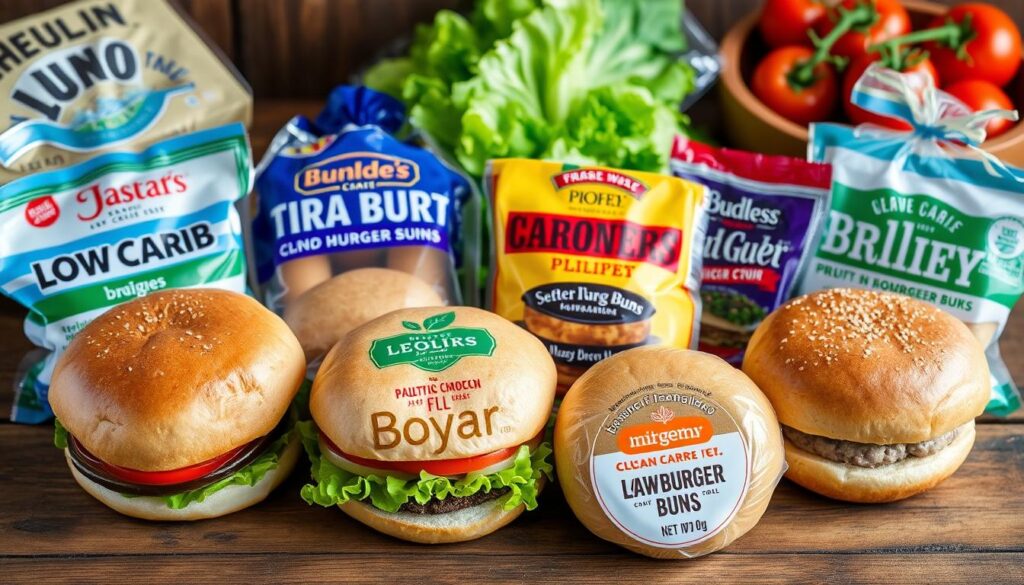
The world of food is changing fast. Now, we have low carb hamburger buns that make eating healthy easy. These buns are great for those who want to eat well but don’t want to give up taste. More and more people want to eat in a way that’s good for them. They look for meals that are healthy but also yummy. Low carb hamburger buns are a hit because they offer both. Today, you can make burgers that are good for you and taste amazing. These special buns are for people who follow keto, gluten-free, or just want to eat better. They let everyone enjoy a great burger without worrying about their diet. Key Takeaways Low carb hamburger buns offer nutritional benefits Keto hamburger buns support specialised dietary needs Healthier meal alternatives are becoming mainstream Innovative recipes maintain traditional burger satisfaction Nutritional adaptability enhances dietary flexibility Understanding the Benefits of Low Carb Hamburger Buns Low carb burger buns are good for your health. They are a smart choice for those who want to eat better. Keto burger buns are more than a trend. They help you eat well and feel good. Health Advantages of Reducing Carbohydrate Intake Eating less carbs can make you healthier. Low carb foods help you: Feel more stable Have less inflammation Keep your metabolism healthy Get more nutrients Impact on Blood Sugar Levels Low carb buns help control blood sugar. They prevent big sugar jumps. This helps your body: Use insulin better Burn fat more efficiently Lower the risk of diabetes Weight Management Benefits Keto buns help with weight control. They have special nutrients that help you: Benefit Description Control Hunger Less carbs mean you eat less Burn Fat Helps your body use fat for energy Keep Muscle Helps you keep your muscle while losing weight Choosing low carb buns is more than a diet. It’s a way to change your health for the better. Essential Ingredients for Perfect Low Carb Hamburger Buns a Making tasty low carb hamburger buns needs the right keto bun ingredients. We must pick the best flour and binding agents. Almond flour is key for making soft, tasty low carb hamburger buns. It’s full of nutrients and has a nutty taste. It also keeps carbs low. Almond flour: Primary low-carb flour base Coconut flour: Alternative protein-rich option Psyllium husk: Natural binding agent Eggs: Crucial for structure and protein Baking powder: Leavening agent For a great keto bun recipe, you need: Ingredient Purpose Carb Content Almond Flour Flour substitute 3g per 1/4 cup Coconut Flour Moisture absorption 4g per 2 tablespoons Psyllium Husk Binding and texture 0g carbs Eggs Protein and structure 0g carbs “Selecting the right ingredients is the secret to creating mouthwatering low carb hamburger buns that don’t compromise on taste or texture.” – Keto Baking Experts Knowing how these keto bun ingredients work is key. It makes your low carb hamburger buns taste like real bread. And they won’t have too many carbs. Step-by-Step Guide to Making Low Carb Hamburger Buns Making tasty low carb hamburger buns at home is easy. This keto bun recipe makes your meals healthier than usual bread. To make great low carb hamburger buns, you need to know a few things. You’ll mix, shape, and bake carefully to get the right texture. Mixing the Perfect Dough Gather all dry ingredients: almond flour, psyllium husk, baking powder Combine wet ingredients: eggs, melted butter, apple cider vinegar Whisk well to get rid of lumps Let it rest for 5-10 minutes to get the right mix Shaping and Baking Techniques When shaping, be precise. Make balls of about 75 grams each. This helps them cook evenly and stay the same size. Baking Parameter Recommended Setting Temperature 180°C (350°F) Baking Time 18-22 minutes Desired Colour Golden brown Storage and Preservation Keep your buns fresh by storing them right. Wrap each bun in parchment paper and put them in a sealed container. Pro tip: Freeze buns for up to three months, ensuring you always have a low-carb option ready! By following these steps, you’ll make perfect keto hamburger buns. They’re not only good for you but also taste amazing. Best Keto-Friendly Alternatives for Traditional Bun Ingredients Making tasty keto hamburger buns needs new ingredients. Low carb bun alternatives have changed how we enjoy meals. They keep our diet goals in check. Looking for new ingredients can make bun-making fun. The right mix gives good texture, taste, and health benefits. Psyllium husk: Provides binding properties and dietary fibre Almond flour: Low-carb base with excellent protein content Coconut flour: Gluten-free and high in healthy fats Xanthan gum: Improves structural integrity *Ingredient selection is key for perfect low carb bun alternatives* When making keto hamburger buns, nutrition matters a lot. Each ingredient must help keep the diet balanced. Ingredient Carbohydrate Content Protein Almond Flour 3g per 28g 6g per 28g Coconut Flour 4g per 28g 3g per 28g Psyllium Husk 1g per 7g 0g per 7g Choosing the right ingredients can make amazing low carb buns. They taste great and meet our diet needs. Popular Low Carb Hamburger Buns Recipes Find tasty low carb hamburger buns recipes to make your keto diet better. These buns are healthy and full of flavour, unlike regular bread. Keto burger buns recipes are great for those who want to eat less carbs but love burgers. Almond Flour Burger Buns Almond flour makes amazing low carb hamburger buns with a nutty taste. They are full of protein, perfect for keto diets. Ingredients: 2 cups almond flour 2 large eggs 1 tablespoon baking powder 1/4 teaspoon salt Preparation time: 25 minutes Baking temperature: 180°C Coconut Flour Version Coconut flour is another great choice for low carb hamburger buns. They have a special texture and a bit of sweetness. Ingredient Quantity Nutritional Value Coconut Flour 1/2 cup Low carb, high fibre Eggs 4 large High protein Cream Cheese 60g Good fat source Cloud Bread Alternatives Cloud bread is a zero-carb choice for the lightest burger buns.
10 High Protein Low Carb Starbucks Drinks

Starbucks is like a second home for coffee lovers. If you’re on a low carb diet, it might seem tricky to find the right drink. But don’t worry! With just a few tweaks, you can enjoy your Starbucks favorites without the carbs. Here’s a list of 10 high protein, low carb drinks you can order. Key Takeaways Low Carb Pink Drink: Swap out the sugar for sugar-free syrup and add heavy cream. Caffè Misto: Use almond milk or a mix of heavy cream and water instead of regular milk. Iced Espresso with Heavy Cream: A simple yet delicious low carb option. Americano with Heavy Cream: Enjoy it hot or cold for a creamy experience. Keto White Drink: Made with unsweetened Peach Citrus White Tea, heavy cream, and sugar-free vanilla syrup. 1. Low Carb Pink Drink The Low Carb Pink Drink is a keto-friendly twist on the popular Starbucks Pink Drink. It’s not just about the pretty color; this drink is a flavorful treat that fits perfectly into a low-carb lifestyle. By swapping out the usual ingredients for more keto-friendly options, you can enjoy this refreshing beverage without the guilt. What Makes It Low Carb? This version of the Pink Drink uses Iced Passion Tango Tea as its base. Instead of the traditional liquid cane sugar, opt for sugar-free syrup. To give it a creamy texture and boost the fat content, add an ounce of heavy cream. Nutritional Breakdown Here’s a quick look at what you’ll be sipping: Calories: 101 Fat: 11 grams Protein: 1 gram Carbs: 1 gram Fiber: 0 grams How to Order To get this drink, ask for an Iced Passion Tango Tea with four pumps of sugar-free syrup and one ounce of heavy cream. This simple modification transforms a regular drink into a keto-friendly delight. Enjoying a low-carb lifestyle doesn’t mean you have to miss out on your favorite Starbucks drinks. With a few tweaks, you can savor the flavors you love while sticking to your dietary goals. For those interested in exploring more low-carb Starbucks options, including the modified Pink Drink with heavy cream and sugar-free syrup, there’s a world of delicious possibilities to discover. 2. Caffè Misto Looking for a simple yet satisfying coffee choice at Starbucks? The Caffè Misto might be just what you need. This drink is a harmonious blend of brewed coffee and steamed milk, making it a comforting option for those who enjoy a classic coffee experience. It’s a perfect choice for anyone seeking a low-calorie, high-protein drink without any added sugar. Why Choose Caffè Misto? Low-Calorie Option: With the use of 2% milk, the Caffè Misto provides a creamy texture without the extra calories. Protein Boost: The milk adds a good amount of protein, making it a great choice for those looking to increase their protein intake. No Added Sugar: Enjoy the natural sweetness of milk without any additional sweeteners. Customization Tips Choose Your Milk: Opt for almond or soy milk to reduce the carb content even further. Add Flavor: Consider adding a pump of sugar-free vanilla syrup for a hint of sweetness without the carbs. Adjust the Coffee: Ask for a stronger brew if you prefer a bolder coffee flavor. A Caffè Misto is a great way to enjoy a classic coffeehouse experience while keeping your dietary goals in check. It’s simple, satisfying, and easily customizable to fit your preferences. For more insights on healthy Starbucks options, check out our guide on healthy Starbucks drink options, including the Caffè Misto, which stands out as a low-calorie choice with no added sugar and a protein boost from 2% milk. 3. Iced Espresso with Heavy Cream For those on a keto diet or just watching their carb intake, an iced espresso with heavy cream is a delightful choice. This drink combines the bold taste of espresso with the creamy texture of heavy cream, creating a satisfying and refreshing beverage. Why Choose Iced Espresso with Heavy Cream? Low Carb Content: With no added sugars and the use of heavy cream, this drink keeps the carb count minimal, making it ideal for keto enthusiasts. Rich Flavor: The combination of espresso’s robust flavor and the smoothness of heavy cream creates a rich, indulgent taste. Customizable: You can add sugar-free syrups to enhance the flavor without increasing the carb count. How to Order Start with a double shot of espresso over ice. Ask for a splash of heavy cream. Optional: Add a pump of sugar-free syrup for extra flavor. Enjoying a rich, creamy iced espresso with heavy cream doesn’t have to be a guilty pleasure. It’s a smart choice for those looking to keep their carb intake low while savoring a delicious coffee treat. This drink is perfect for anyone wanting a quick caffeine boost without the extra carbs. It’s also a great option if you’re looking for keto-friendly Starbucks drinks that don’t compromise on flavor. 4. Americano with Heavy Cream A classic Americano is a simple yet satisfying choice for coffee lovers seeking a low-carb option. By adding heavy cream, you can turn this drink into a creamy delight without breaking your carb budget. Why Choose an Americano with Heavy Cream? Low Carb: With just espresso and water, the Americano is naturally low in carbs. Adding heavy cream keeps it that way. Rich and Creamy: Heavy cream enhances the texture, making the drink smooth and rich. Customizable: Adjust the cream amount to suit your taste. Nutritional Information Component Amount per Serving Calories 70-100 Carbs 1-2g Protein 1-2g Fat 7-8g Adding heavy cream to your Americano not only keeps it keto-friendly but also adds a luxurious touch to your daily caffeine fix. For those following a low-carb lifestyle, the Americano with Heavy Cream is a perfect choice, providing a satisfying coffee experience without unnecessary carbs. Enjoy it hot or iced, depending on your mood and the weather. 5. Keto White Drink The Keto White Drink at Starbucks is like a secret gem for those on a low-carb journey. This drink isn’t on the regular
10 Healthy Low Carb Yogurt And Keto Friendly Yogurts
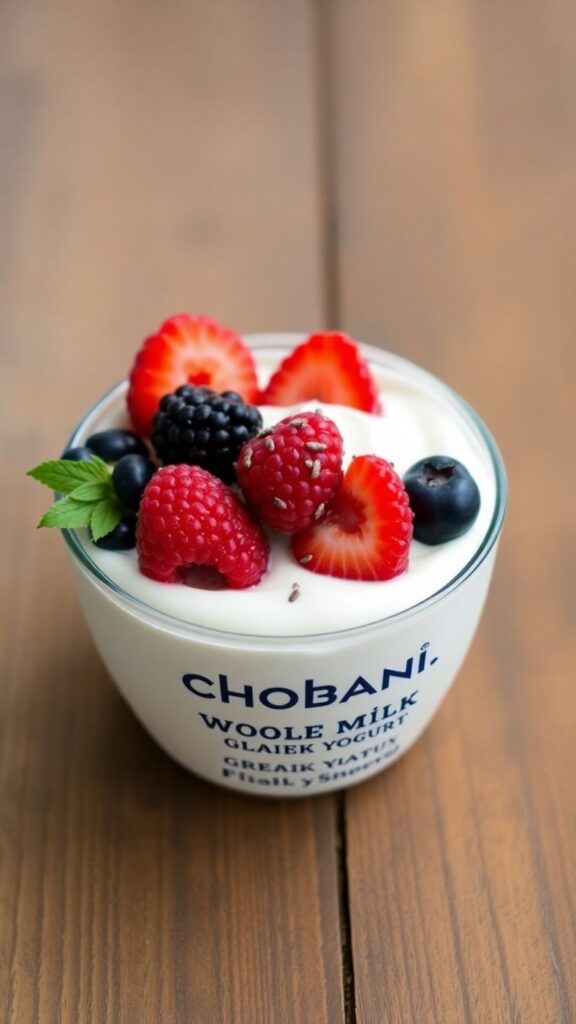
Finding a low carb yogurt that fits into your keto lifestyle can be tricky. With so many options out there, it’s easy to get lost in the dairy aisle trying to figure out which one will keep your carbs in check. But don’t worry, we’ve got you covered! Here’s a list of 10 healthy low-carb yogurts that are perfect for anyone on a keto diet. These picks are not only dietitian-approved but also delicious, so you won’t feel like you’re missing out. Let’s dive into the world of creamy goodness without the carb overload! Key Takeaways Ratio Keto Yogurt Snack is high-fat and low-carb, ideal for keto dieters. Chobani Zero Sugar Mixed Berry Yogurt uses natural sweeteners like allulose and stevia. Coyo Natural Coconut Yogurt is dairy-free and made from coconut milk. Fage Total 5% Milkfat Plain Greek Yogurt is thick, creamy, and high in protein. Siggi’s Plain Whole Milk Yogurt offers a nice balance of carbs to protein. Are all yogurts carbohydrate-rich? Yep. A little yogurt 101 for you: Yogurt is made by adding bacteria to milk, which naturally contains a form of sugar commonly referred to as a carb-called lactose. Lactose is a mix of two forms of sugar: galactose and glucose. That’s why a glass of whole milk contains about 11 grams of sugar (and 12 grams of total carbohydrates). But add bacteria to milk and, well, it converts the lactose into lactic acid. 1. Ratio Keto Yogurt Snack Looking for the best yogurt for keto? Ratio Keto Yogurt Snack is a top pick among keto enthusiasts. This yogurt is crafted specifically for those on a keto diet, boasting a high-fat, low-carb profile that aligns perfectly with your keto percentage needs. Each serving packs a punch with 15g of protein, just 2g of carbs, and 1g of sugar, making it a standout in the world of keto yogurt. Why Choose Ratio Keto Yogurt? Low Carbs: With only 2g of carbs per serving, it’s a fantastic choice for those tracking their carb intake. High Protein: Get a satisfying 15g of protein to keep you full and energized. Delicious Taste: Enjoy a creamy and delightful taste that doesn’t compromise on flavor. Nutritional Snapshot Nutrient Amount per Serving Calories 200 Fat 15g Saturated Fat 6g Carbohydrates 2g Sugar 1g Protein 15g Perfect for those days when you’re wondering, “What yogurt is best for a keto diet?” Ratio Keto Yogurt checks all the boxes, offering a no carb yogurt option that’s both nutritious and delicious. Tips for Enjoying Yogurt on Keto Stick to plain, whole-fat varieties to avoid unnecessary sugars. Consider adding low-carb sweeteners like stevia if you prefer a sweeter taste. Pair with keto-friendly toppings like nuts or seeds for added texture and flavor. This yogurt is not just a snack; it’s a smart choice for anyone committed to maintaining a balanced keto lifestyle. Whether you’re new to the keto diet or a seasoned pro, Ratio Keto Yogurt Snack is a delicious and convenient way to enjoy yogurt on keto. 2. Chobani Zero Sugar Mixed Berry Low Crab Yogurts Chobani Zero Sugar Mixed Berry Yogurt is a game-changer for those watching their carb intake. This yogurt is sweetened with allulose, a natural low-calorie sweetener, along with a touch of stevia and monk fruit extract. It’s a perfect choice for anyone looking to cut down on sugar without sacrificing flavor. Why Choose Chobani Zero Sugar? Low in Carbs: With just 5 grams of carbs per serving, it’s ideal for keto enthusiasts. No Added Sugars: Enjoy the sweetness without the guilt. High in Protein: Each serving packs 11 grams of protein, keeping you full and satisfied. Nutritional Snapshot Here’s a quick look at what you get per serving: Nutrient Amount Calories 60 Fat 0 g Carbohydrates 5 g Sugars 0 g Protein 11 g “Chobani’s Zero Sugar Yogurt Drink is an excellent option for diabetics, keto dieters, and anyone looking to reduce sugar intake, offering a delicious taste without the added sugar.” Chobani’s Zero Sugar Yogurt Drink Chobani Zero Sugar is not just about cutting carbs; it’s about enjoying a delicious yogurt experience. Whether you’re on a keto diet or just trying to eat healthier, this yogurt makes a fantastic addition to your daily routine. Plus, it’s available in a convenient Chobani Mixed Berry Low-Fat Greek Yogurt Cup, perfect for on-the-go snacking. 3. Coyo Natural Coconut Yogurt Coyo Natural Coconut Yogurt is a fantastic option for those looking to keep their carb intake low while enjoying a rich and creamy yogurt experience. This yogurt is made from pure coconut, which gives it a unique taste and texture that’s different from traditional dairy yogurts. It’s thick, tangy, and perfect for anyone following a keto or dairy-free diet. Why Choose Coyo? Dairy-Free: Ideal for lactose-intolerant individuals or those on a vegan diet. Low in Carbs: Perfect for those on a keto diet, as it doesn’t spike blood sugar levels. Rich in Flavor: The coconut base provides a natural sweetness without added sugars. Nutritional Profile Here’s a quick look at what you get per serving: Nutrient Amount Calories 140 Fat 12g Carbs 8g Sugar 1g Protein 2g “Coyo Natural Coconut Yogurt is a deliciously creamy option that fits seamlessly into a low-carb lifestyle.” How to Enjoy Coyo As a Snack: Enjoy it straight from the cup for a quick and satisfying snack. With Toppings: Add some nuts or seeds for a crunchy texture. In Smoothies: Blend it into your favorite smoothie for a creamy boost. For those interested in making their own coconut yogurt, check out this easy vegan recipe that requires just two ingredients and one bowl. It’s a simple way to enjoy a homemade version of this delightful treat. Coyo is not just a yogurt; it’s a versatile ingredient that can enhance your meals while keeping them healthy and low-carb. Whether you’re enjoying it on its own or incorporating it into recipes, this yogurt is a must-try for anyone on a keto journey. 4. Fage Total 5% Milkfat Plain Greek Yogurt Fage
Can Lack of Sleep Cause Nausea? Sleep & Digestive Health

Do you often feel sick to your stomach and wonder why? It might be because you’re not sleeping well. Sleep and digestion are closely linked. We’ll look into how sleep affects your stomach and share ways to feel better. According to the National Institutes of Health, one-third of Americans report not getting enough sleep each night. And while lack of sleep is a common problem, its being widespread doesn’t mitigate its effects. This lack of sleep may badly affect the attitude, cognitive ability, and judgment of an individual, and also leads to physical sickness. At this point, one may wonder, “Can lack of sleep cause nausea?” Nausea is one of the most common adverse effects due to lack of sleep. What Is Nausea? Nausea is a feeling of uneasiness and discomfort in the stomach, which may be followed by a feeling of an urge to vomit. It is not a disease but a symptom of various conditions, ranging from mild to serious. Nausea is a symptom that can arise from very common causes such as motion sickness, overeating, stress, or intake of spoiled food. It also almost always accompanies infections, migraines, or flu. Pregnancy, especially during the first trimester, is another common trigger for nausea, often referred to as “morning sickness.” The feeling of nausea occurs when the brain’s vomiting center receives signals from the digestive tract, inner ear, or the nervous system. These may be due to chemical imbalances, changes in hormonal status, or other external factors such as disagreeable odors. Other medications, chemotherapy, and anesthesia may also cause nausea as part of their side effect. The nauseated person usually acts weak and dizzy and has a loss of appetite. Not all cases of nausea will result in vomiting, although the discomforting feeling and disruption in daily activities might prevail. For nausea, light remedies such as sipping water or ginger tea or bland foods will relieve the condition. Deep breathing and resting in a noise-free area also work well. Nausea that’s very serious, happens often or extends for more than 24 hours might point to a very grave illness that requires care. Its cause has to be diagnosed to carry out the appropriate treatments. In cases of dehydration or food poisoning, it is important to seek professional care to avoid complications. Although nausea can be distressing, it is often manageable with simple solutions and lifestyle adjustments. [Related: How Does Your Sleep Position Affect Sleep Quality?] Understanding the Connection Between Sleep and Digestive Health The link between sleep and digestive health is fascinating. It centers secondary images on circadian rhythms. These are our body’s internal clocks that control sleep and digestion. The Role of Circadian Rhythms in Digestion Circadian rhythms do more than just control our sleep. They also manage our digestion. This includes making digestive enzymes and moving food through our gut. If these rhythms get messed up, like with lack of sleep nausea, it can upset our digestion. How Sleep Cycles Affect Stomach Function Sleep quality and amount affect our stomach. At night, our stomach rests and gets ready for the next day. But, if sleep cycles are broken, it can cause stomach problems like acid reflux and nausea. The Gut-Brain Axis and Sleep The gut-brain axis is key in the sleep-digestive health link. It’s the communication between our gut and brain. Problems here can lead to sleep and digestion issues. This shows how important it is to keep these systems in balance. “The gut and the brain are in constant communication, and this crosstalk is essential for maintaining overall health and well-being.” It’s important to understand how sleep, circadian rhythms, and digestive health are connected. This knowledge helps tackle lack of sleep nausea and other issues. By knowing these links, we can work on better sleep and digestive health. Can Lack of Sleep Cause Nausea? Not many know that not sleeping well can make you feel sick to your stomach. It might seem strange, but research shows it’s true. Not getting enough sleep can make your stomach hurt and feel queasy. Your body’s clock and how it digests food are closely linked. When you don’t sleep enough, this balance gets upset. This can cause many stomach problems, like nausea. “Insufficient sleep can cause hormonal imbalances and inflammation, both of which can impair the proper functioning of the digestive system and contribute to nausea,” explains Dr. Sarah Williams, a sleep specialist. Many studies have found a strong link between sleep-deprived nausea and stomach issues. These include acid reflux, constipation, and even serious problems like irritable bowel syndrome (IBS). Not sleeping well can also mess with how hungry you feel, making nausea worse. If you keep feeling sick and think it’s because you’re not sleeping, you’re right. Getting enough sleep is key. Try to sleep well, stick to a routine, and manage stress. This can help stop sleep deprived nausea and keep your stomach healthy. The Science Behind Sleep Deprivation and Stomach Discomfort Sleep and our stomachs are closely linked. Sleep helps keep our hormones in balance. When sleep is disrupted, our digestion can suffer, causing nausea. Hormonal Imbalances During Sleep Loss Not sleeping well can mess with our hormones. Cortisol, the stress hormone, goes up. This can make our stomachs upset. Ghrelin, the hunger hormone, can also get out of balance, making us feel hungrier and uncomfortable. Impact on Digestive Enzymes Sleep loss affects our digestive enzymes. These enzymes help break down food and control stomach acid. Without them, we might feel stomach discomfort, acid reflux, and other stomach problems. Inflammation and Sleep Deficiency Not sleeping well can make our bodies more inflamed. This inflammation can make stomach problems worse. It’s a cycle that shows how important sleep is for our stomach health. “Restful sleep is essential for maintaining a healthy digestive system. Disruptions in sleep patterns can have far-reaching consequences, including nausea and other gastrointestinal problems.” Common Symptoms of Sleep-Related Nausea Do you often feel sick to your stomach? It could be because you’re not sleeping well.
How Chocolate Affects The Kidneys
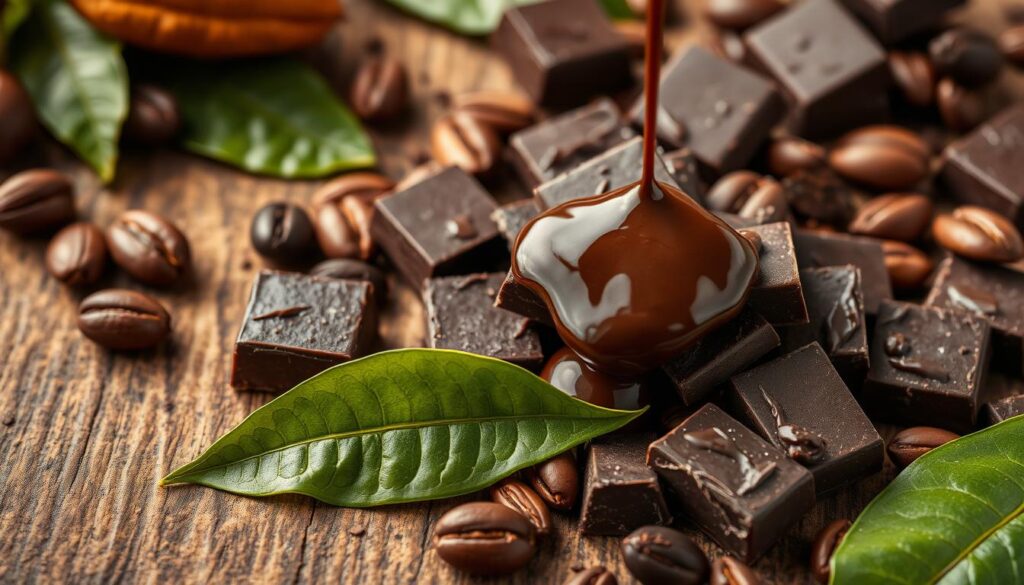
Chocolate is a favorite treat for many. It’s also a topic of interest for its health effects. This guide explores how chocolate, especially dark and milk, impacts kidney health. Key Takeaways Chocolate has compounds that can affect kidney health, both good and bad. Dark chocolate, eaten in small amounts, might help kidneys because of its antioxidants. Milk and white chocolate have more sugar and fat. This can be hard on the kidneys. People with kidney disease should talk to their doctor about eating chocolate. Choosing the right chocolate and eating the right amount can help keep the kidneys healthy. The health benefits of chocolate Chocolate is prepared from cocoa beans that contain a high volume of cocoa flavanols, natural compounds with several beneficial effects on health. Including a small amount of chocolate in your diet can thus be useful if it’s also approved by your physician. At the same time, chocolate consumption needs to be in moderation. It depends on the type of chocolate one consumes. The low-quality ones, containing too much sugar, milk, and additives, are not healthy. In return, high-quality dark chocolate with at least 85% cocoa may provide positive effects, even for people with certain health conditions. Studies have shown that dark chocolate has neuroprotective properties, anti-inflammatory effects, and is heart-healthy. It can also help with the management of some health issues, such as complications related to kidney disease. Consuming the right chocolate in small amounts can help support your overall health. Understanding the Relationship Between Chocolate and Kidney Health Chocolate and kidney health have a deep connection. This connection involves special chemicals in chocolate. These chemicals can affect how well the kidneys work. Know more about Keto Cream Cheese Frosting Chemical Compounds in Chocolate Chocolate is full of flavonoids and theobromine. These are important for research. They can change how kidneys handle waste in our bodies. Basic Kidney Functions and Filtration Kidneys filter our blood and remove waste. They keep our body’s fluids balanced. Chocolate’s compounds can affect this process. Initial Impact Assessment Chocolate’s link to kidney health is complex. Studies show it can both help and harm kidneys. Knowing this is key for those with kidney disease. “The key to maintaining a healthy balance lies in moderation and understanding the unique interplay between chocolate and the kidneys.” The Role of Dark Chocolate in Kidney Function Dark chocolate is full of cocoa. It’s good for your kidneys. Its antioxidants help keep your kidneys working well. Dark chocolate has flavonoids. These help lower stress and inflammation in your kidneys. Chronic inflammation can harm your kidneys. Dark chocolate also helps your heart. A healthy heart means better blood flow to your kidneys. This is key for their function. If you have kidney problems, talk to your doctor first. Dark chocolate has potassium. Too much can be bad for your kidneys. Nutrient Dark Chocolate Milk Chocolate White Chocolate Antioxidants High Moderate Low Potassium (mg/100g) 228 158 58 Dark chocolate can be good for your kidneys. It’s tasty and helps your kidneys stay healthy. Potassium Content in Different Types of Chocolate Chocolate lovers, beware! The potassium in chocolate can affect your kidneys. Let’s look at how much potassium is in each type of chocolate. Dark Chocolate Potassium Levels Dark chocolate is known for its deep flavor. It’s also a good source of potassium. A small piece of dark chocolate has about 160 milligrams of potassium. But, if you have kidney problems, be careful. Eating too much dark chocolate can raise potassium levels. This might make kidney issues worse. Milk Chocolate vs. White Chocolate Comparison Milk and white chocolate have less potassium than dark chocolate. Milk chocolate has about 50 milligrams of potassium per ounce. White chocolate has only 10 milligrams. This makes milk and white chocolate safer for people with kidney problems. They have less potassium, which is better for them. Safe Consumption Amounts Chocolate Type Potassium Content (per 1 oz serving) Safe Consumption Amounts for Kidney Health Dark Chocolate 160 mg Moderation is key; individuals with kidney issues should limit intake to 1-2 servings per week. Milk Chocolate 50 mg Individuals with kidney concerns can safely enjoy 1-2 servings per day, as part of a balanced diet. White Chocolate 10 mg White chocolate is a low-potassium option, and individuals with kidney issues can generally consume it without significant risk, in moderation. How Chocolate Affects The Kidneys: Direct Impact Analysis Chocolate is a favorite treat for many. But, it can also affect kidney function. The chocolate kidney effects are being studied a lot. It’s important to know how cocoa impact and renal function are connected to our health. Chocolate can raise blood pressure. This is bad for the kidneys. The flavanols in cocoa might help control blood pressure. This is good for the kidneys. The kidneys filter blood better with chocolate. Cocoa’s polyphenols help remove bad stuff. This is good for the kidneys. “Moderate chocolate consumption can have a positive impact on kidney function, provided it is part of a balanced and healthy diet.” But, chocolate’s effects on kidneys are complex. They depend on your health and how much chocolate you eat. Too much dark chocolate can be bad, especially for those with kidney problems. In short, chocolate’s effects on the kidneys are complex. There are both good and bad sides. Knowing how chocolate affects kidneys helps us make better choices about what we eat. Benefits of Moderate Chocolate Consumption for Kidney Health Many love chocolate for its taste. But, it might also help your kidneys. Studies show chocolate can be good for your kidneys if you eat it in small amounts. Antioxidant Properties Dark chocolate is full of antioxidants. These fight off bad stuff in your body. They might help your kidneys work better. Blood Pressure Regulation Chocolate can also help with blood pressure. Dark chocolate has special compounds that make blood vessels better. This is good for your kidneys and blood pressure. Anti-inflammatory Effects Inflammation is bad for your kidneys. Dark chocolate has anti-inflammatory properties. This might
How Long Do Hyperfixations Last | Understanding Duration
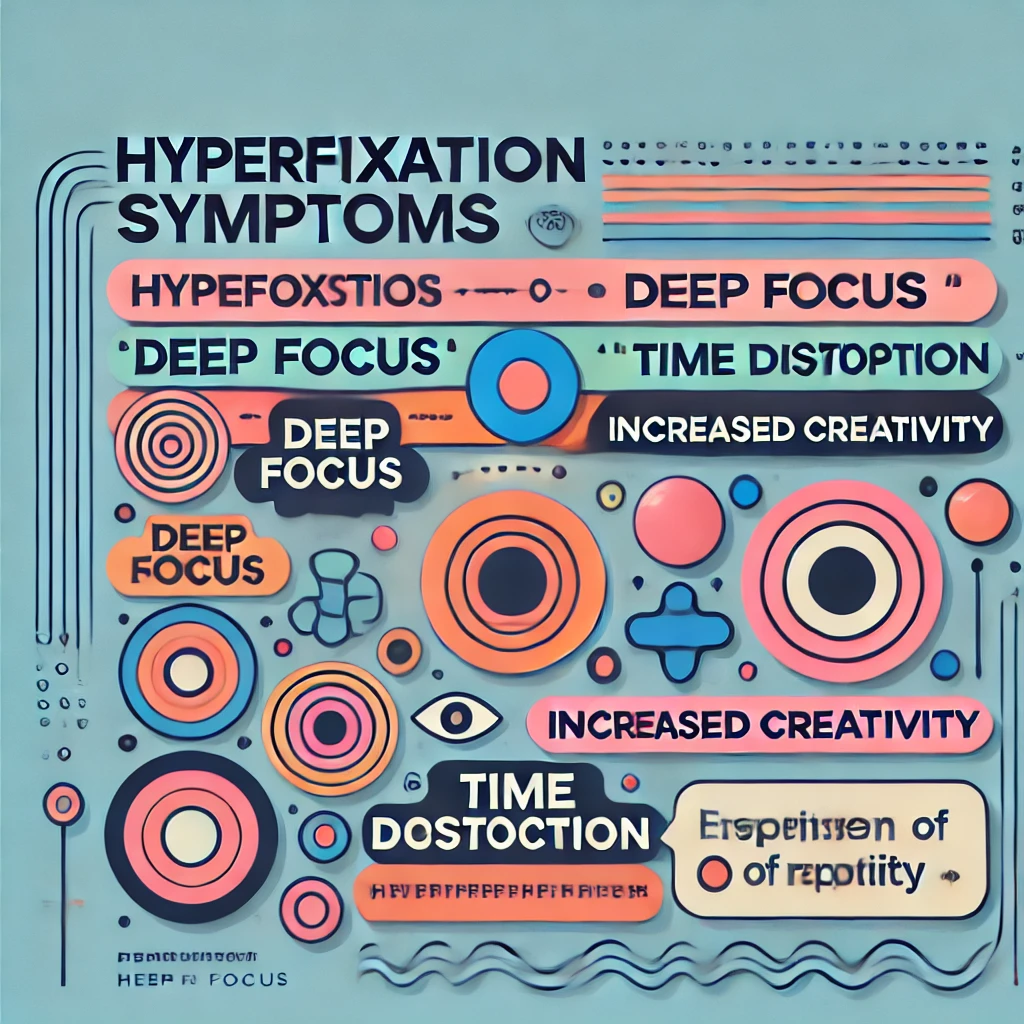
Hyperfixation is a magnetic phenomenon. It makes people deeply focused on something. The time they stay focused can be short or very long. Understanding hyperfixation is key. It helps us see how our brains work and how we engage with the world. This article looks into hyperfixation’s details. We explore how long it lasts, what happens in the brain, and what affects its duration. By learning about this, we can help people with hyperfixation. This can improve their life and work. Hyperfixation: Definition and Basic Concepts Hyperfixation is when someone gets really into one thing. It’s like being focused on something. This can make them forget about other parts of their life. Common Signs and Characteristics of Hyperfixation People with hyperfixation show certain signs. They include: They focus hard on one thing. They can’t stop thinking about it, even when they should be doing other things. They feel very connected to it. They spend too much time on it. They find it hard to switch to something else. Differentiating Between Hyperfixation and Normal Interest Having strong interests is normal. But hyperfixation is different. It takes over someone’s life, making it hard to balance work and play. Knowing the difference is key to handling it. The Science Behind Hyperfixation and Brain Function Hyperfixation is linked to autism spectrum disorder. It has a deep connection to how our brains work. Scientists have found interesting facts about this intense focus. Research shows that hyperfixation is tied to the brain’s reward and attention areas. When someone gets really into something, their dopamine system kicks in. This makes them feel good and want to keep doing it. Also, hyperfixation might affect how well we can switch tasks. People who get really focused might find it hard to stop and start something new. This shows they might struggle with changing their focus. “Hyperfixation is a complex phenomenon that reflects the interplay between cognitive, emotional, and neurological factors.” How long and intense hyperfixation lasts can vary a lot. It might depend on genetics, what’s around us, and our life experiences. Learning about hyperfixation helps us understand people with autism better. alt=”Hyperfixation brain function” data-id=”147948366″ /> As scientists keep studying, they hope to learn more about hyperfixation. They want to find ways to help people who face challenges but also get benefits from this unique brain function. How Long Do Hyperfixations Last: Typical Duration Patterns Hyperfixations are when you focus on something for a long time. They can last from a few hours to weeks or months. Knowing how long they last is important for managing them. Short-term Hyperfixation Episodes Some people have hyperfixations that last a few days. These episodes start suddenly and grab your full attention. You might spend hours on it, ignoring everything else. Long-term Hyperfixation Experiences Others have hyper fixations that last longer, sometimes months. They dive deep into their interests, always looking for more. This can change their daily life a lot. Many things can affect how long hyperfixations last. This includes your personality, the topic you’re interested in, and if you have autism. Knowing this can help you and your loved ones deal with hyperfixations better. “Hyperfixations can be both a blessing and a curse, with the intensity of focus providing a sense of deep engagement and fulfillment, but also the potential for disruption to daily routines and relationships.” Factors That Influence Hyperfixation Duration How long a hyperfixation lasts can change a lot from person to person. Many things can affect this. Knowing these can help us understand why some how long does an average hyperfixation last? and others go on for a long time. Personal traits and psychology play a big role. Things like anxiety, stress, and mood can change how long a hyperfixation lasts. People with autism hyperfixations might see different lengths because of their brain and thinking patterns. “Hyperfixations can be both a blessing and a curse, as they can provide intense focus and productivity, but also disrupt daily routines and relationships if they become all-consuming.” What’s around us can also affect how long a hyperfixation lasts. If we can easily find what we’re fixated on, it might last longer. But if it’s hard to find, it might not last as long. How new and challenging something is can also matter. Things that are very interesting and hard to do keep us focused longer. But simple tasks don’t keep us as interested for as long. Knowing what affects how long hyperfixations last can help us manage them better. It helps keep a balance between being productive and feeling good overall. The Connection Between Autism and Hyperfixation Length People with autism often get really into one thing for a long time. This is called hyperfixation. The length of these fixations can be different from others. Common Patterns in Autistic Individuals Research shows autistic people stay focused longer than others. Their fixations can last for weeks, months, or even years. They dive deep into what they love. There are many reasons why autistic people might stay focused longer. They often like details a lot. They also like routine and getting really into special interests. These traits help them stay focused. Supporting Healthy Fixation Patterns Even though long fixations can be fun, it’s key to keep them balanced. We can help by making sure they have time for everything. We can also teach them new things and ways to handle their focus. Knowing how autism and focus work together helps us support them better. We can help them enjoy their interests without getting too caught up. Managing Extended Hyperfixation Periods Hyperfixations are when someone focuses really hard on one thing for a long time. They can be very rewarding but need to be managed to keep life balanced. Here are some ways to handle these long periods of focus. Establish Boundaries and Routines It’s key to know how much time and energy to give to the hyper fixation. Make a routine with breaks, meals, and other activities. This stops the
What Does A PCOS Belly Look Like – Symptoms & Signs

Polycystic Ovary Syndrome (PCOS) is a complex hormonal condition. It affects many women worldwide. The “PCOS belly” is a noticeable symptom. It’s a unique weight distribution that can affect a woman’s health and appearance. alt=”What Does A PCOS Belly Look Like” data-id=”147933313″ /> PCOS leads to hormonal imbalances. This can cause weight gain, especially around the midsection. The weight gain is due to hormones, insulin resistance, and other factors. Knowing the signs of a PCOS belly is key. It helps women with this condition take steps to improve their health. Key Takeaways PCOS is a hormonal condition that can lead to a distinctive “PCOS belly” appearance The PCOS belly is characterized by excess weight gain, particularly in the abdominal area Understanding the symptoms and signs of a PCOS belly is crucial for effective management of the condition PCOS-related weight gain is often the result of hormonal imbalances and insulin resistance Recognizing the unique characteristics of a PCOS belly can help women take proactive steps to address this aspect of the condition What is PCOS? Polycystic Ovary Syndrome (PCOS) is a condition that affects how a woman’s ovaries work. It happens when hormones like estrogen and testosterone are out of balance. Women with PCOS might have irregular periods, extra hair growth, or trouble losing weight. Sometimes, small cysts form on their ovaries, but not always. PCOS is common and can affect your health in different ways, from skin issues to difficulties getting pregnant. The earlier you understand it, the easier it is to manage. Understanding PCOS and Its Impact on Body Shape Polycystic Ovary Syndrome (PCOS) is a complex hormonal disorder. It affects a woman’s reproductive health and body shape. Hormonal imbalances and their effects on metabolism and fat distribution are at the heart of this condition. What Does a PCOS Belly Look Like? A PCOS belly is usually a result of weight gain, especially around the stomach area. The weight doesn’t always spread evenly. Instead, it collects in the middle, giving the stomach a round or bloated look. This is called abdominal fat. It’s not just about appearance—this kind of fat can be linked to health problems like diabetes or heart disease if not managed well. The Role of Hormones in PCOS PCOS is marked by too much androgens, or male hormones, in women. This imbalance causes symptoms like irregular menstrual cycles, acne, and excess facial or body hair growth. It also affects how the body stores and distributes fat, often leading to abdominal fat or a “PCOS belly.” How Do You Know if You Have a PCOS Belly? Here are some signs to look for: Weight gain around your waist but not in other areas like arms or legs. A bloated or puffy stomach, even if you’re not overeating. Difficulty losing weight, even with exercise and diet. If you notice these, it’s a good idea to see a doctor for tests to confirm if PCOS is the cause. Causes of a PCOS Belly The main reason for a PCOS belly is hormone imbalance. When your body produces too much insulin, it can lead to weight gain, especially around the stomach. Other causes include: Inflammation: Chronic inflammation can increase fat storage. Stress Hormones: High cortisol levels can lead to more fat around the waist. Risk Factors Some things make PCOS more likely: Family History: If your mom or sister has PCOS, your chances are higher. Lifestyle: Poor diet and lack of exercise can make symptoms worse. Age: PCOS often shows up in your teens or twenties but can continue later in life. What Can You Do About It? There are ways to reduce a PCOS belly and feel better: See a Doctor: They might suggest medicine to help with hormones or insulin levels. Stay Active: Regular movement can burn fat and improve your mood. Sleep Well: A good night’s rest helps balance hormones. Exercises for a PCOS Belly Certain exercises work well for reducing belly fat: Walking: A simple, low-impact way to burn calories. Strength Training: Builds muscle and increases metabolism. Yoga: Reduces stress and improves flexibility. How PCOS Affects Fat Distribution The hormonal imbalance in PCOS messes with the body’s fat-storing ways. This leads to more fat around the abdomen. Insulin resistance, common in PCOS, makes abdominal fat even more likely. Common Body Changes with PCOS Increased abdominal fat and a distinct “PCOS belly” appearance Weight gain, particularly around the midsection Difficulty losing weight, despite diet and exercise efforts Irregular menstrual cycles and excess facial/body hair growth Skin changes, such as acne or dark patches It’s key to understand how PCOS, hormones, and body shape are linked. This knowledge helps manage the condition and its physical effects. What Does A PCOS Belly Look Like Polycystic Ovarian Syndrome (PCOS) is a hormonal disorder. It affects a woman’s body shape and fat distribution. A PCOS belly appearance is a common sign. It often looks like a central obesity or apple-shaped figure. Women with PCOS often have extra weight around their midsection. This central obesity comes from hormonal imbalances. It makes the body store fat in the belly area. The PCOS belly looks round and protruding. It has a lot of fat around the waist and belly. This makes the belly feel firm or doughy. Characteristic Description Fat Distribution Excess fat around the waist and abdomen, leads to a distinctive apple-shaped figure Abdominal Appearance Protruding, rounded abdomen with a firm, doughy texture Underlying Cause Hormonal imbalances in PCOS lead to central obesity and fat storage in the midsection Knowing what a PCOS belly looks like is important. It helps women with PCOS spot signs and symptoms. They can then get the medical help they need. Distinguishing PCOS Belly vs Pregnant Belly Women with polycystic ovary syndrome (PCOS) often wonder if their belly looks like a pregnant woman’s. Both can cause a swollen belly, but they are different. Key Physical Differences A PCOS belly is softer and spreads out more evenly. A pregnant belly is firmer, rounder, and sticks out more. Weight
Is Coleslaw Good for Diabetics – Diabetic Coleslaw Recipe
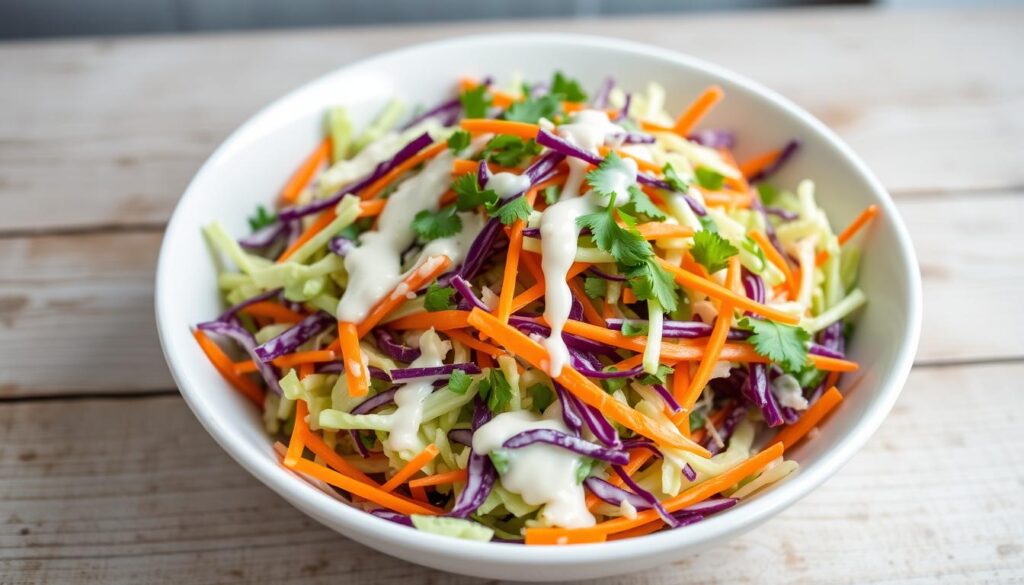
If you have diabetes, you might wonder about coleslaw. It’s a tasty side dish. But is Coleslaw Good for Diabetics? The answer is yes, with a few tweaks. We’ll look at coleslaw’s nutrition and how it affects blood sugar. We’ll also show you how to make a low-carb, homemade coleslaw. It’s great for people with diabetes. alt=”is coleslaw good for diabetics” data-id=”146115108″ /> Learning about the glycemic index of coleslaw ingredients is key. By making smart swaps, you can make a low-sugar coleslaw. Let’s explore how to make a diabetic-friendly coleslaw that’s delicious and guilt-free. Understanding Coleslaw and Blood Sugar Impact Coleslaw can affect blood sugar levels. It’s key to know the glycemic index of its ingredients. The glycemic index shows how fast a food raises blood sugar. Glycemic Index of Common Coleslaw Ingredients Cabbage, the main part of coleslaw, has a low glycemic index. It ranges from 10 to 15. This means cabbage doesn’t raise blood sugar much. Carrots and onions in coleslaw also have low glycemic indexes. They are usually below 50. The dressing in coleslaw is the big problem. Traditional dressings have a lot of sugar. This makes the dish’s glycemic index very high. So, does coleslaw have a lot of sugar? is a big question for people with diabetes. How Traditional Coleslaw Affects Blood Glucose Traditional coleslaw has mayonnaise, sugar, vinegar, and sometimes high-fructose corn syrup. These add a lot of carbs and calories. They’re not good for people with diabetes. The sugar in the dressing and the cabbage can quickly raise blood sugar. This makes regular coleslaw bad for those with diabetes. To make coleslaw better for diabetes, use different dressings. Try to add less sugar and carbs. Is Coleslaw Good for Diabetics: Breaking Down the Facts Managing diabetes means choosing the right foods. Coleslaw, made from shredded cabbage, is often debated. Is it good for diabetics, or should they avoid it? Let’s explore the good and bad of coleslaw in a diabetic diet. The benefits of eating coleslaw for diabetics come from cabbage. It’s a low-glycemic veggie that doesn’t raise blood sugar much. It’s also full of dietary fiber, which helps with digestion and feeling full. These are key for managing blood sugar. But, traditional coleslaw with high-sugar dressing is a problem for diabetics. The sugar in coleslaw dressings can quickly raise blood sugar. To make coleslaw better for diabetics, use low-sugar dressing recipes and watch your portions. Ingredient Glycemic Index Cabbage 10 Carrots 47 Mayonnaise (regular) 0 Sugar 65 Knowing the glycemic index of coleslaw ingredients helps. With smart swaps, coleslaw can be a tasty, diabetes-friendly side dish. alt=”coleslaw” data-id=”146115110″ /> Nutritional Benefits of Cabbage-Based Dishes for Diabetics Managing diabetes means watching what you eat. Cabbage, in coleslaw, is great for diabetics. It’s full of good stuff for your diet. Essential Vitamins and Minerals Cabbage has lots of vitamins and minerals good for diabetics. It’s full of vitamin C to help your immune system. It also has vitamin K for blood and bones. Plus, it has folate for growing cells. Fiber Content and Blood Sugar Management What are the benefits of eating coleslaw? It’s because cabbage has lots of fiber. Fiber makes carbs absorb slower, keeping blood sugar steady. Low carb coleslaw is especially good for diabetics, with cabbage’s fiber without extra sugar. Anti-inflammatory Properties Cabbage and veggies like broccoli and kale fight inflammation. Inflammation is a big problem for diabetics. Eating these veggies can help lower your risk of health problems. Knowing cabbage’s benefits helps diabetics make better food choices. Adding what are the benefits of eating coleslaw? to your meals is tasty and helps manage diabetes. Making Your Coleslaw Diabetes-Friendly: Key Modifications If you have diabetes and love coleslaw, you can make it safe to eat. Just a few changes to the recipe can help. You’ll get a tasty, low-sugar coleslaw that’s good for your health. First, cut down on the sugar in the dressing. Traditional coleslaw has a lot of sugar, which isn’t good for your blood sugar. Try using stevia or erythritol instead. They add sweetness without raising your blood sugar. Next, use more low-sugar coleslaw ingredients like cabbage and carrots. These veggies are full of fiber and vitamins. You can also add broccoli, cauliflower, or radishes to your homemade coleslaw. For the dressing, choose a low-sugar or sugar-free mayonnaise or yogurt. Stay away from creamy, high-fat dressings. They can make your blood sugar go up and down. Adding apple cider vinegar or lemon juice gives flavor without extra carbs. With these easy changes, you can make basic coleslaw for diabetics that’s tasty and safe. Enjoy your crunchy, flavorful coleslaw without worrying about your blood sugar. Low-Carb Coleslaw Recipe for Diabetics Are you a diabetic looking for a tasty coleslaw recipe? This low-carb coleslaw is great for managing blood sugar. It’s also delicious as a side dish. Ingredient List and Substitutions 1 medium head of green cabbage, shredded or thinly sliced 1 medium carrot, grated 1/4 cup diced onion 1/2 cup plain, unsweetened Greek yogurt 2 tablespoons apple cider vinegar 2 tablespoons Dijon mustard 1 tablespoon erythritol or other low-calorie sweetener Salt and pepper to taste Want a dairy-free version? Use unsweetened almond or coconut milk yogurt instead. For a creamier dressing, add a tablespoon of mayonnaise. Step-by-Step Preparation Guide In a large bowl, mix the shredded cabbage, grated carrot, and diced onion. In another bowl, mix the Greek yogurt, apple cider vinegar, Dijon mustard, and sweetener until smooth. Pour the dressing over the cabbage mix and toss gently to coat. Season with salt and pepper to taste. Cover and chill the coleslaw for at least 30 minutes to blend flavors. Storage and Serving Tips This coleslaw keeps in an airtight container in the fridge for up to 5 days. It’s perfect with grilled meats, fish, or on low-carb burgers or sandwiches. Adjust serving size for your carb needs. alt=”low carb coleslaw” data-id=”146115112″ /> Best Sugar Alternatives for Diabetic Coleslaw Creating a low sugar coleslaw for diabetics means
What Is The Ice Hack To Lose Weight – Ice Hack Diet

The ice hack diet is a new way to lose weight. It uses cold therapy to help the body burn more calories. This method is based on the idea that cold can make the body burn fat faster. The ice hack diet is a weight loss strategy that involves including ice or other cold foods and drinks into one’s diet to possibly help in weight loss. The idea behind the diet is that eating these items can reduce a person’s body temperature, which may boost metabolism and allow them to burn more calories. alt=”what is the ice hack to lose weight” data-id=”144478250″ /> When you get cold, your body makes more brown fat. Brown fat is special because it helps keep you warm. By getting cold on purpose, you might lose weight faster. Understanding the Ice Hack Diet Phenomenon The ice hack diet is big in the weight loss world. It uses cold to help lose weight. This method is based on science about cold and fat. It typically includes adding ice to the diet, drinking cold liquids, and consuming only cold foods within a person‘s calorie allowance. This dietary pattern is based on the principle of thermogenesis. The term describes the production of heat by the body, through which the body tries to maintain homeostasis. Homeostasis describes how the body tries to balance all the body systems necessary for the body to survive and function correctly. Cold temperatures stimulate cold-induced thermogenesis, a process in which metabolism increases to help raise a person‘s temperature. There is some evidence that targeting thermogenesis may also help in the management of obesity and metabolic diseases. Other cold exposure techniques exist to complement weight loss baths, cold shower exposures, or the application of ice packs on the body. Origins of the Ice Hack Weight Loss Method Scientists found that cold makes our bodies burn more energy. When we get cold, our body makes special fat to stay warm. This fat burns calories. Scientific Principles Behind Ice Therapy The ice hack diet works by making our body react to cold. When we get cold, our body uses special fat to stay warm. This helps us burn more calories. Popular Ice Hack Variations There are many ways to do the ice hack diet. People take ice baths, use ice packs, or drink cold drinks. They all try to make our bodies burn fat faster. What Is The Ice Hack To Lose Weight The ice hack is a way to lose weight by using cold. It makes your body work harder to stay warm. This can help you burn more calories and lose weight. Cold exposure benefits come from different ice hack methods. You can take cold showers, sit in ice baths, or use ice packs. These actions make your body use brown fat to stay warm. Being cold makes your body burn more calories. This is called cold-induced thermogenesis. It’s the key to the ice hack weight loss method. Adding it to your life can help you reach your weight goals. alt=”ice hack weight loss” data-id=”144478252″ /> “Exposing the body to brief periods of intense cold can significantly boost metabolism and promote fat burning.” How Ice Temperature Affects Metabolism and Fat Burning The “ice hack” weight loss method uses cold temperatures to boost your metabolic rate. It helps you lose belly fat. Let’s explore the science behind it. Cold-Induced Thermogenesis Process When it’s cold, your body starts to change. It makes heat to keep warm. This is called cold-induced thermogenesis. It uses special fat cells called brown adipose tissue (BAT). These cells burn calories to make heat. Unlike regular fat, they help you lose weight. Metabolic Rate Changes During Ice Therapy Studies show cold temperatures can make your metabolic rate go up. When you’re in ice water or use ice packs, your body works harder. This means you burn more calories. This can help you lose weight and get rid of belly fat. Brown Fat Activation Through Cold Exposure The ice hack works by turning on brown fat. Brown fat burns calories to make heat. Cold temperatures make brown fat grow and work more. Safety Considerations and Potential Risks The ice hack diet is popular for losing weight. But, knowing the safety and risks is important before trying it. Is it safe to attempt the ice hack diet? The answer depends on your health and how you do it. One big cold therapy precaution is avoiding hypothermia. Cold can make your body temperature drop too low. This is very dangerous. Always follow the ice hack steps and watch how your body reacts. “Extreme cold exposure can also cause frostbite, particularly in the extremities, which can lead to tissue damage and even amputation in severe cases,” warns Dr. Emily Splichal, a podiatrist and expert in cold therapy. Another health risk is the heart. Cold can stress your heart too much. This is bad for people with heart problems. Always talk to a doctor before starting cold therapy. Even though some people see good results with the ice hack diet, be careful. Always get help from a doctor. Knowing the risks helps you decide if the ice hack diet is safe for you. Implementing the Ice Hack Diet Correctly To get the most from the ice hack diet, you must follow it carefully. This part will show you how to do it right. It will help you lose weight better. Recommended Ice Hack Protocol The ice hack diet means getting cold for a bit. You should take a cold bath, use ice packs, or shower with cold water for 10-15 minutes. Do this 2-3 times a day. It makes your body burn fat more. Timing and Frequency Guidelines Being consistent is important with the ice hack diet. Try to do your cold therapy in the morning, afternoon, and evening. Do it 2-3 times a day for the best results. Required Materials and Preparation You’ll need some things to do the ice hack diet right? You’ll need a big container or bathtub for ice baths, ice packs, and a timer. Get everything ready before you start. Make sure the water or ice is cold enough. alt=”ice hack diet protocol” data-id=”144478254″ /> “The key to unlocking the full potential of the ice hack diet lies in meticulous planning and consistent execution.” By following
High Protein Keto Rice Crispy Treats Recipe (Sugar Free)
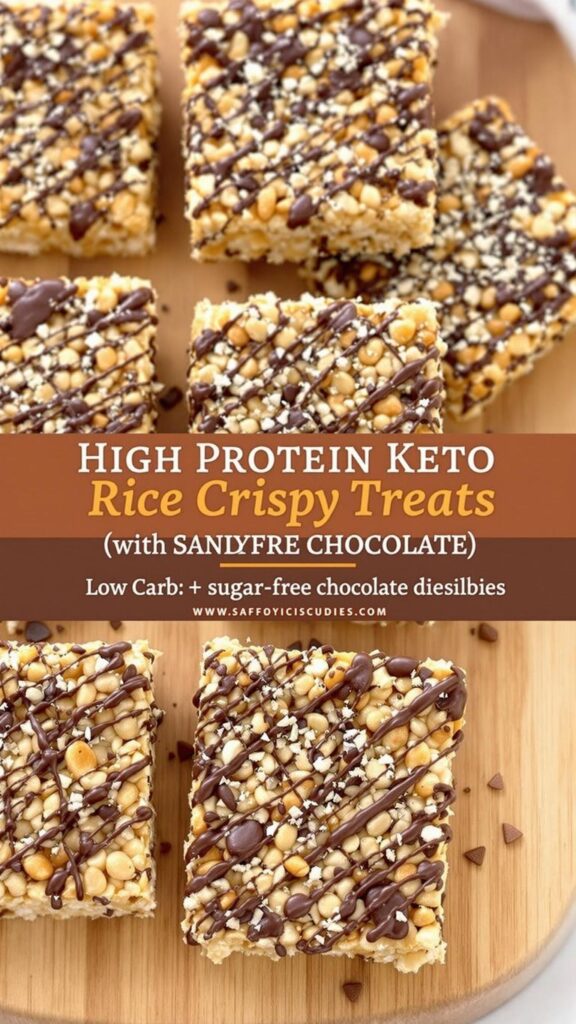
If you’re looking for a tasty treat that fits into your keto diet, these high-protein keto rice crispy treats are a perfect choice! They are not only delicious but also easy to make. This article will guide you through understanding the keto diet, the importance of protein, and how to whip up these yummy snacks without sugar. Get ready to enjoy a sweet treat that won’t ruin your diet! Key Takeaways Keto rice crispy treats are a low-carb, high-protein snack. Using sugar alternatives keeps these treats keto-friendly. Protein is important in a keto diet for muscle health and energy. These treats can be customized with nuts and spices for extra flavor. Proper storage helps maintain the freshness and taste of your treats. Understanding the Keto Diet Basics of the Keto Diet The keto diet is a way of eating that focuses on consuming very low amounts of carbohydrates while getting most of your calories from fats. This diet helps your body switch from using carbs for energy to burning fat instead. By doing this, many people find they can lose weight more easily and feel less hungry throughout the day. Benefits of a Keto Lifestyle Adopting a keto lifestyle can offer several advantages: Weight Loss: Many people experience significant weight loss on this diet. Reduced Hunger: The high-fat content can help you feel full longer. Stable Blood Sugar Levels: It can help keep your blood sugar levels steady, which is great for overall health. Common Misconceptions About Keto There are some myths about the keto diet that can be misleading: Keto is just a fad diet: While it has gained popularity recently, it has been used for medical purposes for many years. You can eat unlimited fats: While fats are a big part of the diet, moderation is still important. Keto is unhealthy: When done correctly, it can be a healthy way to eat, focusing on whole foods and nutrients. The ketogenic diet is not just about cutting carbs; it’s about changing how your body gets energy. By understanding the basics, you can make informed choices that support your health goals. The Role of Protein in Keto Importance of Protein in Keto Protein is a vital part of the keto diet. It helps in maintaining muscle mass while you lose weight. When you eat enough protein, it can also help you feel full longer, which is great for managing hunger. Here are some key points about protein in keto: Supports muscle health Helps regulate appetite Keeps you satisfied between meals Balancing Protein and Carbs Finding the right balance between protein and carbs is essential on a keto diet. While you want to keep carbs low, you also need enough protein to support your body. A good rule of thumb is to aim for a moderate protein intake, focusing on high-quality sources. This can include: Grass-fed beef Eggs Fatty fish Sources of High-Quality Protein Choosing the right protein sources is crucial for a clean keto diet. Here are some of the best options: Protein Source Type Benefits Grass-fed beef Animal Nutrient-dense, complete protein Eggs Animal High in essential amino acids Fatty fish Animal Rich in omega-3 fatty acids Poultry Animal Lean protein option Plant-based options Plant Good for variety and nutrients Protein is not just about building muscle; it plays a crucial role in keeping you full and satisfied, which is important for sticking to your keto goals. In summary, protein is a key player in the keto diet. It helps you maintain muscle, manage hunger, and provide essential nutrients. By choosing high-quality protein sources, you can enjoy the benefits while staying on track with your keto lifestyle. Introduction to Keto Rice Crispy Treats What Makes Them Keto-Friendly Keto rice crispy treats are a delicious twist on the classic snack. They are made with keto rice crispy cereal instead of regular rice cereal, which helps keep the carb count low. These treats not only satisfy your sweet cravings but also provide a nourishing boost to your daily fiber intake. By using sugar alternatives like erythritol, you can enjoy a sweet flavor without the sugar spike. Nutritional Benefits These treats are not just tasty; they also offer several nutritional benefits: High in Protein: Each serving can provide around 15g of protein, making them a great snack for muscle recovery. Low in Carbs: With only 3g-7g net carbs per serving, they fit perfectly into a keto diet. Fiber-Rich: Ingredients like almond flour and nuts add fiber, promoting a healthy digestive system. How They Differ From Traditional Treats Unlike traditional krispie treats, which are often loaded with sugar and carbs, keto rice crispy treats are designed to be healthier. Here’s how they differ: Sugar-Free: They use sugar alternatives, making them suitable for those watching their sugar intake. Low-Calorie: These treats are lower in calories compared to regular versions, helping with weight management. Nutritious Ingredients: They often include healthy fats and proteins, unlike the empty calories found in traditional treats. Keto rice crispy treats are a fun and healthy way to enjoy a classic snack without the guilt! Ingredients for High Protein Keto Rice Crispy Treats Choosing the Right Protein Powder When making high-protein keto rice crispy treats, selecting the right protein powder is crucial. Look for options that are low in carbs and free from added sugars. Here are some popular choices: Whey protein isolate Pea protein Collagen peptides These options provide a great protein boost without compromising your keto diet. Sugar Alternatives for Keto Treats To keep your treats sugar-free, you need to use suitable sugar alternatives. Some of the best options include: Erythritol Stevia Monk fruit sweetener These sweeteners help maintain the crispy low carb rice texture while keeping the treats deliciously sweet. Other Important Ingredients In addition to protein powder and sweeteners, you’ll need a few more ingredients to create the perfect keto rice crispy treats: Crispy low carb rice (like puffed rice made from brown rice) Unsweetened nut butter (like almond or peanut butter) Coconut oil or butter for


